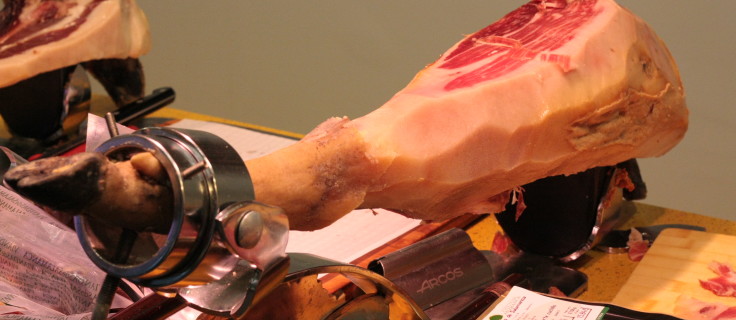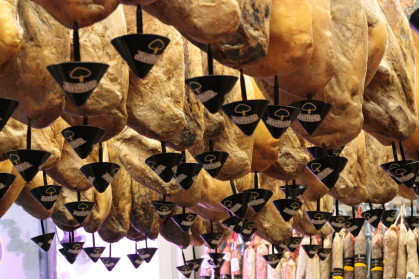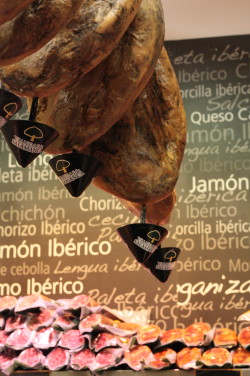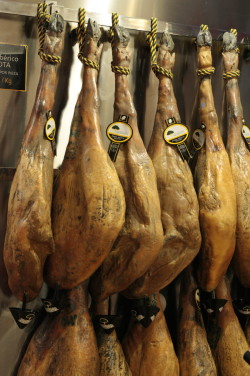Spanish Jamón Explained
 BY Taste Spain
BY Taste Spain
 0 COMMENT
0 COMMENT
 Photos
Photos

In Northern Spain, we love our jamón. To tempt you into a visit to the region, we have a few photos to show you just how much jamón is literally hanging around. In case you were wondering what makes jamón so special, here’s a quick run down of its many qualities.
The type of any Spanish ham is determined by the breed of the pig, how and where it was raised and how it was processed. These are simple factors, but they make a vast difference to the flavour, quality and how much you should expect to pay.

Jamón Cuts
Hams from Spain are commonly offered in the following cuts, either from ibérico pigs or other breeds. The ibérico versions of each of these cuts only became available in the U.S. in 2007.
- Bone-in and boneless whole hams (back legs)
- Bone-in and boneless paletas (shoulders)
- Lomos (cured pork loins)
- Chorizos and salchichones (sausages)


Bellota grade Ibérico ham (jamón ibérico de bellota)
Bellota grade hams come from ibérico pigs that have spent the final three or four months of their lives feasting on the rich, sweet acorns that fall from the holm and cork trees in the meadows of a region called the Dehesa. This period of grazing on the open range is called the montanera, and the pigs add about half their weight during this period.
The coveted hams they produce are unique – their beautiful nutty slices glisten due to the 60 percent marbled fat content, which contains healthy mono triglycerides (also found in olive oil) and melts at room temperature. Because of its quality, many connoisseurs have referred to jamón ibérico bellota as the “Beluga caviar of hams

 Facebook
Facebook Google Plus
Google Plus Pinterest
Pinterest Twitter
Twitter